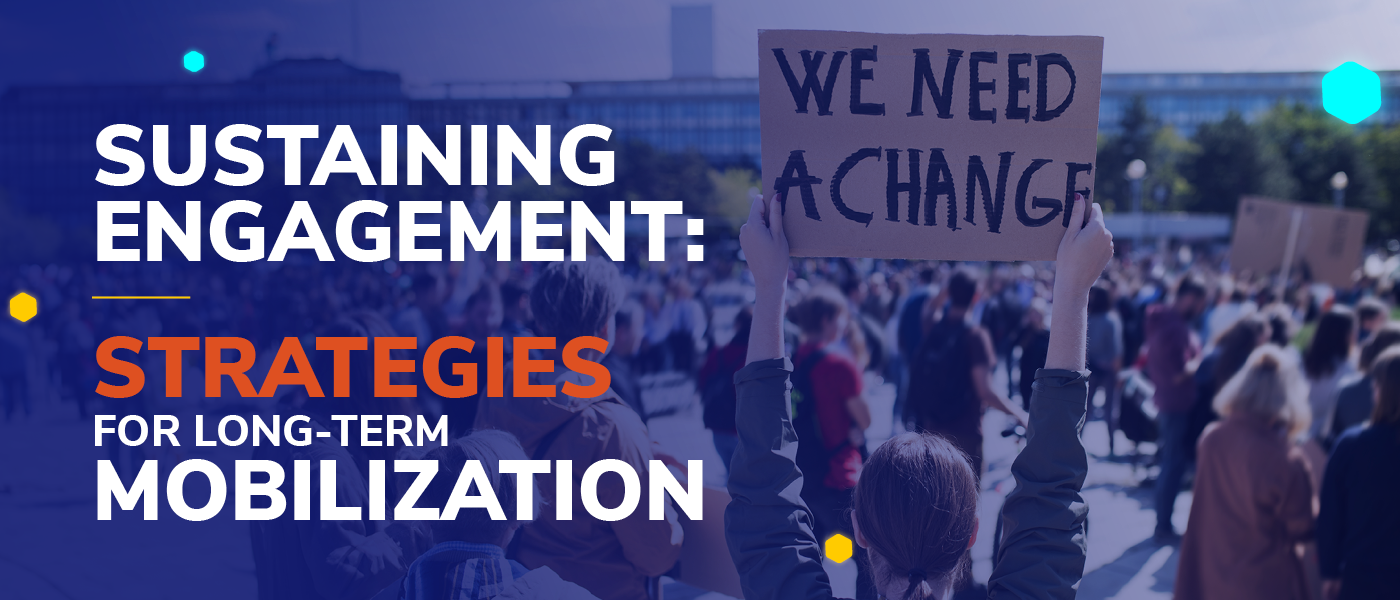Sustaining Engagement: Strategies for Long-Term Mobilization

Just like other community-based organizations, nonprofits and advocacy groups thrive off of supporters’ passion, drive, and action. However, keeping the momentum alive can be challenging for organizations of all types, especially when managing a large supporter base or dealing with internal and external changes.
Implementing a set of standardized engagement strategies can help your cause grow and maintain the energy needed to fuel your activities. In this guide, we’ll cover how to determine which mobilization tactics are right for your organization, communicate the changes, cultivate your community, and win more support for your cause.
How to tailor strategies to supporter preferences
To really tap into community support, take inspiration from engagement political campaign engagement strategies. Political organizers rely heavily on public opinion to get votes for their candidates, so their strategies are fine-tuned to resonate with supporters’ interests and preferences.
These criteria can help your organization shape promising engagement strategies for your unique community:
- Develop key performance indicators. When you set goals for your engagement strategies, you’ll need to determine what success looks like. Choose key performance indicators that make sense for your community. For instance, if your supporters engage via digital channels, you might choose to track impressions on your social media posts.
- Collect feedback from stakeholders. No one understands the needs and preferences of your community better than its own members. If you’ve launched dedicated mobilization efforts in the past, ask past volunteers and advocates for feedback so you know how to improve. Or, if you’re still planning community engagement ideas, send out a survey to your support base to ask for their opinions on ways they’d like to get more involved.
- Clean supporter data. Gauging the effectiveness of your engagement strategies requires accurate data collection and maintenance practices. Standardize practices such as auditing and appending data so no important information falls through the cracks.
3 engagement strategies for supporter mobilization
1. Use segmentation
Everything from fundraising management to advocacy work to supporter engagement hinges on the quality of your communication tactics. Personalizing your efforts is crucial for writing impactful messages that motivate your supporters to take action.
Writing each supporter a personal message is time-consuming. However, you can segment your communications based on shared characteristics to customize your messaging efficiently. Some common segmentation criteria for mobilizing support include:
- Previous engagement with your organization
- Specific causes they’re most passionate about
- Volunteering history
- Demographics
- Location
- Previous advocacy campaign participation
Pick your segmentation criteria based on the goal of each message and your campaign in general. For instance, if you’d like to boost voter registration in a certain local community, you can send more voter information communications to people in that area.
2. Offer multiple participation opportunities
Your community members can get more involved with your organization in a variety of ways. For instance, some supporters donate financially to your cause, whereas others sign petitions or volunteer their time to spread the word about cause-related issues.
Offering multiple ways to get involved lowers the barrier to entry and allows more people to engage with your cause. Consider offering these participation opportunities for interested advocates:
- Grassroots organizing: Help your supporters host their own grassroots advocacy activities by providing resources and workshops detailing how to get started.
- Digital ambassadorship: From participating in text/phone banks to spreading awareness of your cause on social media, a digital ambassadorship program is a valuable way to get people across the country to contribute to your efforts.
- Skills-based volunteering: Your organization can use volunteer labor for more than petition-signing. Promote a more engaging form of volunteerism by asking supporters to contribute with their professional or personal skills. For example, you might ask an artist volunteer to design graphics for your website.
- Peer-to-peer fundraising: While community members have different giving capacities, you can boost everyone’s fundraising potential by offering peer-to-peer fundraising. This activity empowers your supporters to market your cause across channels, access their own networks, and bring your cause more donations.
- Advocacy fellowships: Incentivize students to get involved by offering an organizing internship or fellowship. It’s a win-win—your cause accesses a supporter group with a strong interest in your work, and the students can get class credit, volunteer hours, and networking opportunities, all while making a difference.
Once you narrow down your additional engagement activities, promote them on your website under a “Ways to Get Involved” dropdown tab. Include important information such as estimated time commitment, location, key dates, and materials or skills required so you get the most qualified supporters to fill each role.
3. Enhance appreciation efforts
Supporter-led movements, especially grassroots advocacy campaigns, are strengthened by the hard work and persistence of your advocates. Show your gratitude for their passion for your cause with dedicated appreciation efforts.
Here are a few tiers of appreciation to consider implementing into your own framework:
- General appreciation. This might entail your campaign posting a general thank-you to your supporters on social media, your website, or in your monthly newsletter.
- Personalized appreciation. On this level, you can thank advocates personally after they’ve taken action for your cause. For example, you might send thank-you eCards that include the advocate’s name and basic personal information after they’ve donated or volunteered for your cause.
- Exclusive appreciation.
Take it a step further for your most loyal supporters by inviting them to special gratitude events with other top contributors or offering special rewards, such as merchandise or a meet-and-greet with community leaders.
All of these tiers have benefits and drawbacks, but you should always at least thank your contributors personally for their help. Taking the time to personally thank supporters makes them feel valued for more than just their relation to your cause and can encourage them to renew their support in the future.
To optimize your appreciation cadence, gauge what your organization is currently doing to show gratitude to supporters. Once you’ve narrowed down the tier that best represents your efforts, look to other nonprofit appreciation campaigns or poll your supporters for tips on how to improve.


